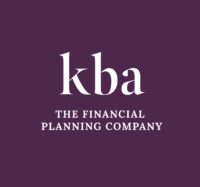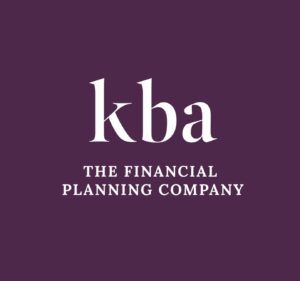Along with getting motivated with your new year resolutions, January is a good time to sort out some of the life admin that often gets forgotten.
When was the last time you reviewed your pension savings? Judging by the findings of a survey commissioned by The People’s Pension, the answer is likely to be “not recently”.
According to the research, 40% of people check their pension savings less often than once every six months. Meanwhile, 76% check their bank balance at least once a week.
25% of people have never checked their pension savings.
So, this year take some time to get to grips with your pension admin with these nine tips for what not to miss off your to-do list.
1. Sign in, log on, or download the app
Sign up to access your pension savings online or in your provider’s app. If your provider has an app that you haven’t got on your phone, download it now.
Do this for current and former workplace pensions. Go through the hassle now and it will be easier to keep a regular check on your retirement savings well into the future.
2. Consider consolidating your pensions
As you check older pensions you might have from previous jobs, you may decide that it’s worth consolidating your pensions into one place.
There are several reasons you may find this useful, including:
- It will make your pension admin easier in future
- You may find you can get a wider or better choice of investments elsewhere
- Drawing from one pension pot when you retire may be easier than managing your retirement income from several different sources
- You may find it cheaper if you’re only paying one set of fees to one provider.
Consolidating your pensions may not be appropriate. For example, you may have guarantees or benefits that you’ll lose by transferring to a different provider.
If you wish to explore your options, get in touch and we’ll help you understand if consolidating makes sense for you.
3. Check how much is in your pension
Look at the current value of your pension and check back to see how much was in it a year ago.
This will give you a clear understanding of the progress you are making and, hopefully, a sense of achievement. Seeing the difference one year can make can provide useful encouragement, especially when you’re back into the grind at work and it’s all feeling a bit relentless.
4. Check the returns you’re getting
Don’t just look at the current balance. Make sure you break it down and give yourself a better idea of the value of these four elements:
- Check on the growth that has come from investment returns
- How much from your own contributions
- How much from your employer
- How much from tax relief.
If your pension fund hasn’t performed particularly well, check which asset classes and sectors it is invested in that have dragged it down. You may think you could get better investment returns elsewhere. If so, you may want to rethink how your fund is invested.
We can help you assess how your pension is invested and, if you can invest elsewhere, one of our expert advisers will be happy to talk you through all your options.
5. Consider increasing your contributions
If you’ve found it easy to make contributions at your current rate, consider if you could afford to contribute a little more to your pension each month.
This is a particularly good idea if you haven’t maximised your employer matching scheme. If you do decide to increase your contributions, check whether your work will too. At the same time, check on the maximum amount your employer will contribute so you don’t miss out on the potential for higher contributions in the future.
6. Work out if you’re on target for a decent retirement income
While you have all the numbers in front of you, spend a little extra time working out how much income you might be able to expect when you retire.
The Pension and Lifetime Savings Association suggests that £20,800 a year, including the State Pension, should be enough for a decent retirement income. To deliver this amount, you’d need a pot worth around £300,000 by the time you retire.
Do the calculations to see if you’re on track. And ask yourself if this amount is enough for the lifestyle you hope to enjoy when you retire.
Getting the sums right in your head now means you’ll have time to increase your retirement savings if things aren’t yet adding up as you’d hoped.
7. Assess whether you should move your funds
With a better understanding of the retirement income you might expect, consider whether you want to move your pension pot to a different fund to attain more growth, or to one with less growth and less risk, which, if your retirement date is close by, might be appropriate.
The risk level of your pension investments should be aligned with your personal appetite for risk, as well as your age and retirement plans. Generally, the younger you are, the more risk you can afford to take, as you have a lot longer until you retire.
Bear in mind that even older pension savers can be better positioned with a higher proportion of equity. This is especially true if you don’t expect to be drawing from your pension for a while, or wish to leave your pension in your will, which can benefit your estate planning.
Remember, with inflation relatively high right now, it’s important to keep your pension growing at a rate above prices. This will mean you’ll need to invest a proportion of your retirement pot in higher-growth equities.
8. Complete your expression of wishes form
An expression of wishes is a statement that tells your pension provider who you’d like to receive your pension savings if you die before accessing the money.
If you haven’t already completed your expression of wishes form, do it now. Figures from interactive investor suggest that only 15% of pension holders have filled out these forms.
Make sure you complete an expression of wishes for each pension you hold. You can name the same person in each form, or someone different. You can also name more than one beneficiary for each pension, which can be useful if you want to split the sum between your children.
9. Talk to a financial planner
If you want help to ensure that you’re on track to afford your desired retirement lifestyle and you’d like help with a personalised financial plan to meet your life goals, get in touch. Email us at contactme@kbafinancial.com or call us on 01942 889 883.
Please note: This blog is for general information only and does not constitute advice. The information is aimed at retail clients only.
The Financial Conduct Authority does not regulate estate or tax planning.
A pension is a long-term investment. The fund value may fluctuate and can go down, which would have an impact on the level of pension benefits available. Your pension income could also be affected by the interest rates at the time you take your benefits. The tax implications of pension withdrawals will be based on your individual circumstances, tax legislation and regulation, which are subject to change in the future.


